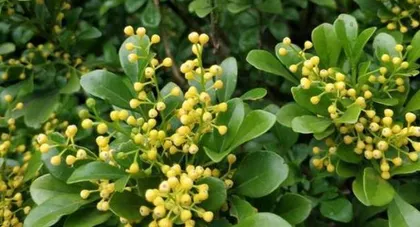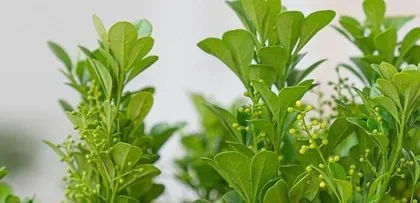The flowering period of Aglaonema is a beautiful sight in the garden, but to ensure it blooms beautifully for a long time, certain care and management are required. The following will introduce how to manage the flowering period of Aglaonema.

Choose the right soil
Aglaonema thrives in sandy soil, so it is important to choose loose, well-draining soil when planting. If the soil is too moist, it can cause root rot in the Aglaonema.
Fertilize properly
During the growing season, fertilize the Aglaonema every two weeks. You can use organic or chemical fertilizers. However, be mindful of the amount of fertilizer applied, as over-fertilization can affect the growth and quality of its flowering period.

Prune branches and leaves in a timely manner
After the flowering period, prune the branches and leaves promptly, removing dead branches and withered flowers. This allows the Aglaonema to better absorb nutrients and water, preparing it for the next flowering cycle.
Pay attention to watering
Aglaonema prefers a moist environment, but excessive watering can damage its roots. Generally, watering once a week is sufficient, but the amount should be adjusted based on actual conditions.
Pest and disease prevention
Aglaonema is susceptible to pests such as aphids and whiteflies. It is important to detect them promptly and take effective preventive and control measures. At the same time, prevent infections from bacteria and fungi by keeping the garden clean and hygienic.

Control the temperature
Aglaonema prefers a warm and humid environment, but temperatures that are too high or too low can affect its growth and flowering period. Therefore, when planting, choose a suitable environment and use shade nets and thermometers for regulation.
Plant propagation
Aglaonema can be propagated through methods like cuttings and division. This not only expands the planting scale but can also extend the duration of its flowering period. However, pay attention to the techniques and timing during propagation.
Extend the flowering period
If you want to prolong the flowering period of Aglaonema, you can take measures to increase its number of blooms. For example, using growth regulators or controlling the duration of sunlight exposure.
Disease identification
During the care process, promptly identify and recognize diseases that Aglaonema might encounter, such as brown spot disease, mold disease, and leaf blight. Take timely and effective measures for prevention and control.
Watering techniques
Watering is key to the healthy growth of Aglaonema. Pay attention to techniques such as watering the right amount, on a schedule, and avoiding waterlogging to allow the Aglaonema to grow happily in a moist environment.
Daily maintenance
Daily maintenance is a crucial part of ensuring the Aglaonema remains beautiful over time. Pay attention to tasks weeding, loosening the soil, and pruning to keep the garden tidy and hygienic.
Control the flowering period
To allow the Aglaonema to bloom continuously, you can take measures to control its flowering period. For example, using shade nets or removing flowers to control the timing of its growth and blooming.
Growing environment
Aglaonema needs a suitable growing environment, which includes factors like soil, climate, and water. Choose the right environment based on actual conditions to provide a good setting for its growth.
Responding to drought
Drought is a significant factor affecting the healthy growth of Aglaonema. Take measures to increase its water supply, such as increasing watering frequency or using water-retaining agents.
The flowering period of Aglaonema is a beautiful sight in the garden, but to ensure it continues to bloom beautifully, it requires proper care and management. Through measures like choosing the right soil, fertilizing properly, and pruning branches and leaves in a timely manner, the Aglaonema can bloom beautifully in the garden for a long time.